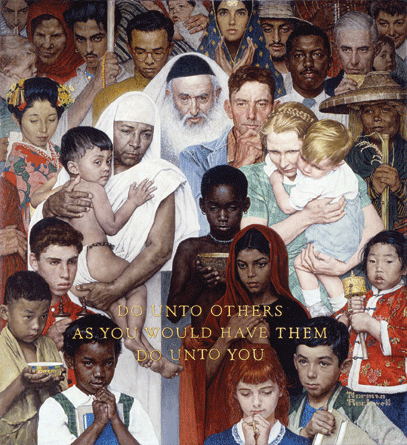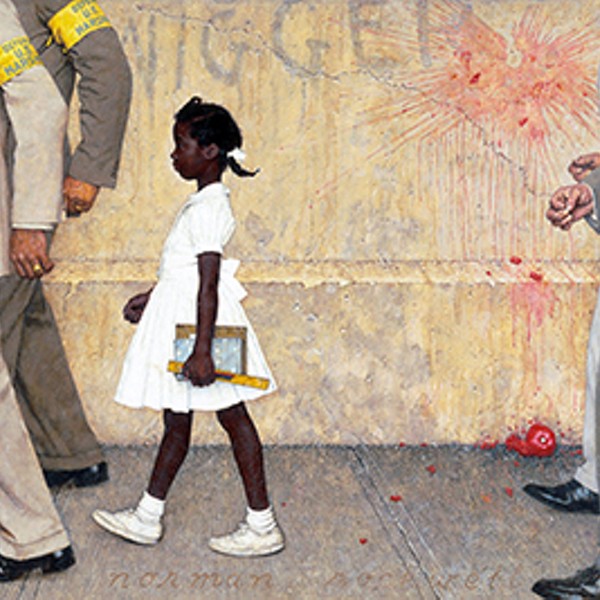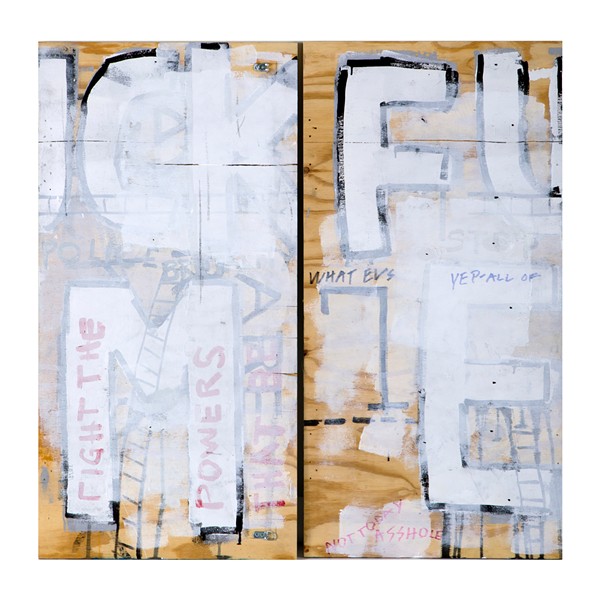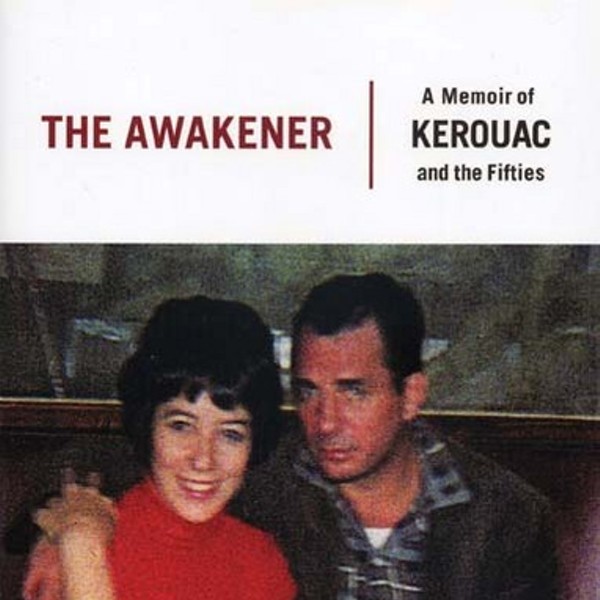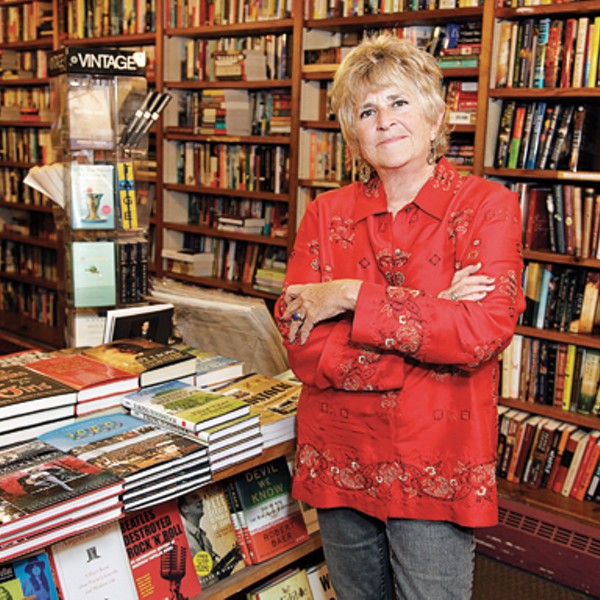“Do unto others...” For most Americans in 1961, the familiar adage really meant, “Do unto others who look like you.” Norman Rockwell, in his painting, Golden Rule, challenged that hypocrisy and laid the truth of “the other” smack dab in the middle of America’s coffee tables. Golden Rule appeared on the cover of the Saturday Evening Post on April 1, 1961. The social and political climate (JFK had just been inaugurated, Amnesty International had just been organized, and the Saturday Evening Post finally agreed to let colored people appear on a cover) was perfect for the “big picture” declaration of tolerance Rockwell had been trying to make for decades.
Norman Rockwell detested bigotry. Despite what seemed to be America’s need to petrify him within a cult of innocence, the illustrator had been making small jabs against social injustice throughout his career. He placed a multi-ethnic group in the Four Freedoms poster commissioned by the US government in 1943.
In 1953, Rockwell began creating a tribute to the UN. The mural displayed the world’s peoples amassed behind UN delegates, “waiting for the delegates to straighten out the world, so that they might live in peace and without fear.” The artist used actual delegates as models for the work, and, in that tumultuous post-Stalin period, Russian delegates changed often. It was impossible for Rockwell to keep up, and he abandoned the project.
Then, in 1961, Rockwell tried again. The Post accepted “Do unto others” as a cover concept, and the illustrator resurrected his “peoples of the world” theme. But the models for Golden Rule were all local people, Rockwell’s friends, acquaintances, or neighbors, a fact that reveals the panorama of “others” who were a part of Rockwell’s life.
David Gunn, Jr., the black man in the upper right corner, was the son of one of Rockwell’s pipe smoking buddies. The brown girl in the red shawl at the bottom center is Darlene Simon, niece to Michael Abdalla, Stockbridge’s Lebanese grocer and a neighbor of Rockwell’s. And the black boy in back of Darlene is Paul Adams. Paul, along with his sister Pauline, portrayed at the bottom left, sang in a family gospel group based in their hometown of Cambridge, outside Saratoga. Grandma Moses, a resident of Cambridge and a close friend of Rockwell’s, introduced the family to the artist whose home and studio were only 15 minutes across the state border in Arlington, Vermont.
In Golden Rule, people are no longer waiting for world leaders to straighten out anything. Instead, Rockwell has each of us looking directly into the faces of all of us: young, old, black, white, brown, male, female. We are each “the other,” responsible to each other for the world we create. Or, in the parlance of today, “We are the 99 percent.” Norman Rockwell understood that long before Zuccotti Park.
Jane Allen Petrick is currently working on her book, Hidden in Plain Sight: The Other People in Norman Rockwell’s America. www.janeallenpetrick.com.
Visit www.chronogram.com to watch a short film on Norman Rockwell's legacy of social justice by Stephen Blauweiss and Amy Loewenhaar, produced by www.artistdvd.com







